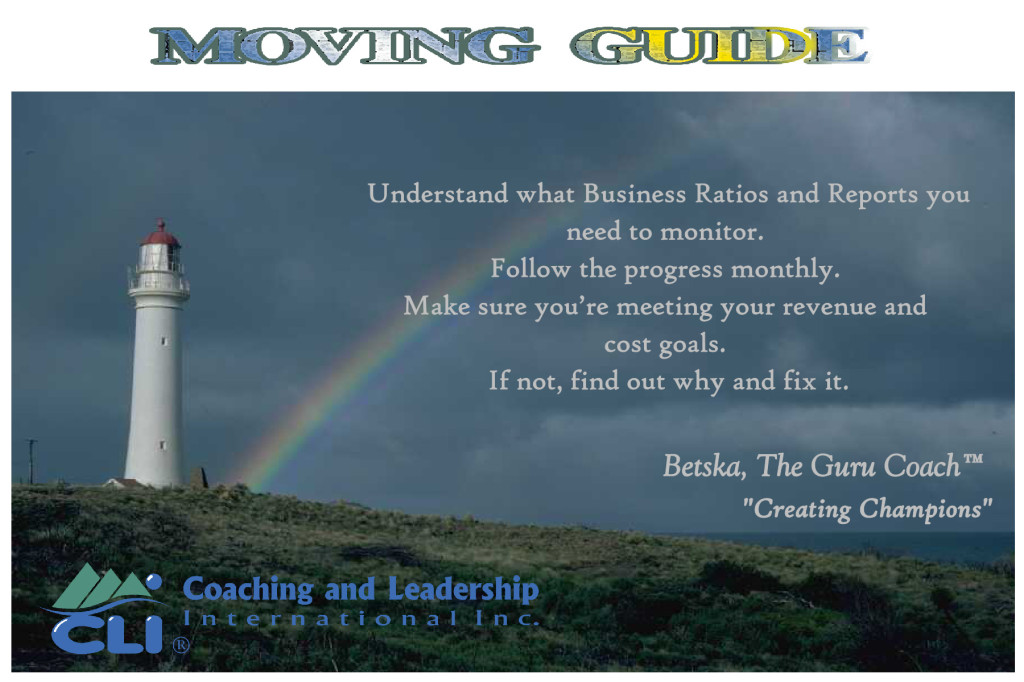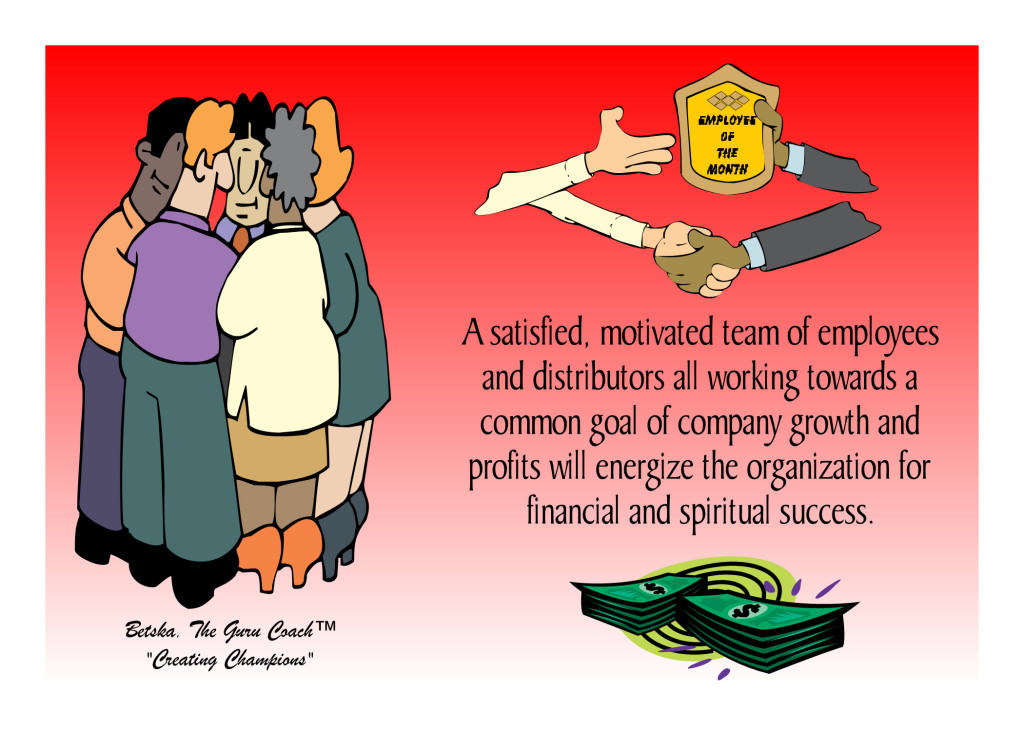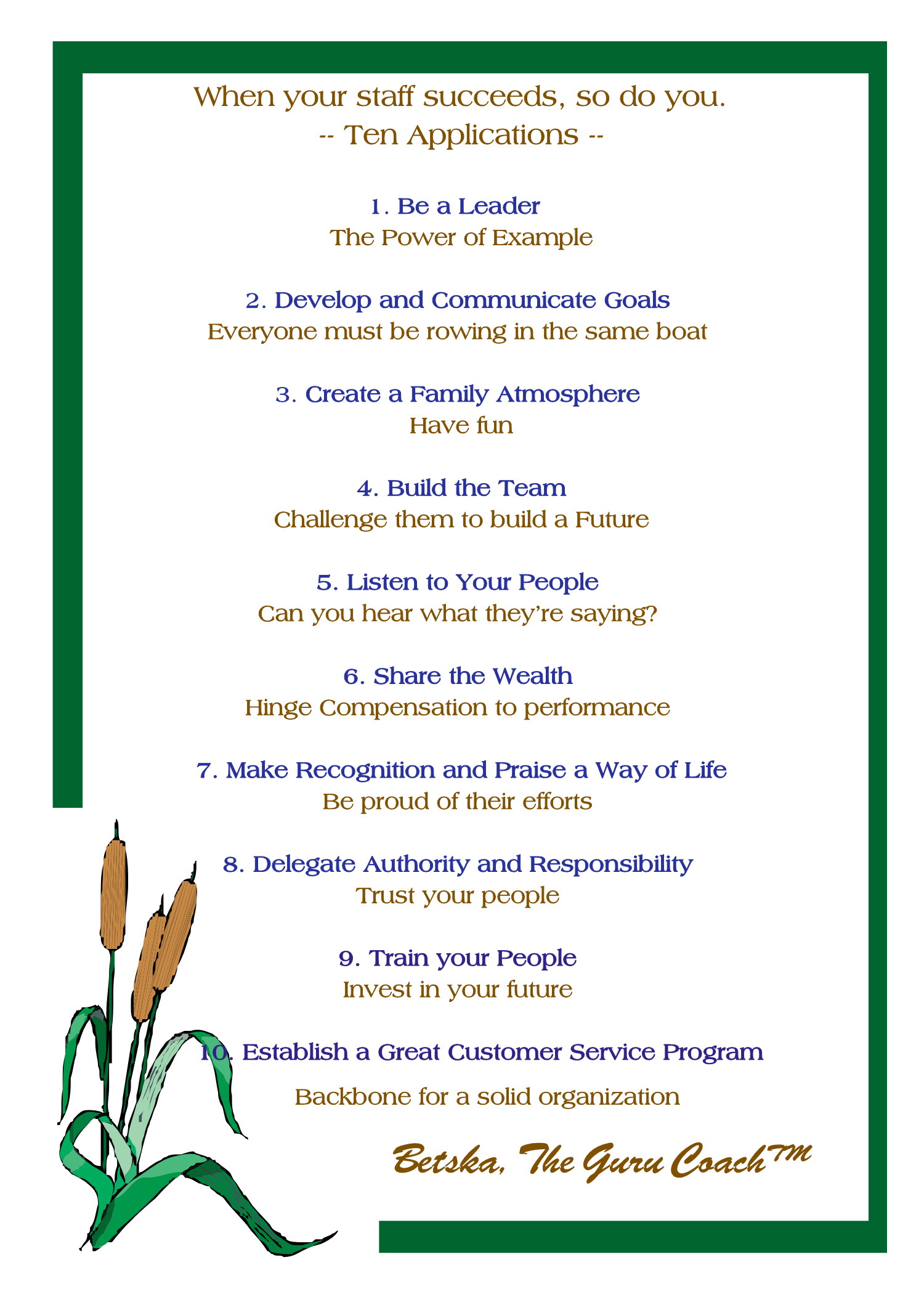Category Archives: blog-post
What does the COO of Facebook say about Leadership?
This is a continuation of Application #2 on Developing and Communicating Goals for Creating Champions in the workplace, part of a series of blog articles with the overall theme of “When your staff succeeds, so do you.”
7 Steps to Planning Your Future
Sheryl Sandberg, COO of Facebook,
is very clear about authentic communication as a Leader.
(Tweet about this)
Sheryl Sandberg, COO of Facebook, opens the hearts of all leaders in her book “Lean In”. I highly recommend this book where Sheryl invites us to dig deeper and self-reflect on what is really important in our organizations. It is a blueprint for personal growth. Watch her Ted Talk which, to date, has garnered close to 5 million views.
Sheryl writes, “Authentic communication is not always easy, but it is the basis for successful relationships at home and real effectiveness at work. Yet people constantly back away from honesty to protect themselves and others. This reticence causes and perpetuates all kinds of problems: uncomfortable issues that never get addressed, resentment that builds, unfit managers who get promoted rather than fired, and on and on. Often these situations don’t improve because no one tells anyone what is really happening. We are so rarely brave enough to tell the truth.”
In these 7 Steps to Planning Your Future, we lay the groundwork for authentic communication. In future blog articles we’ll provide you with more tools with which to bravely communicate and then you teach your employees/colleagues to do the same. Stay tuned!
1. Develop Your Departments Mission, Vision, Goals and Values.
Reference my last blog article on the difference between a Corporate MVGV and a Departmental MVGV.
• Every employee should understand the Mission – what your business is all about.
• Every employee should be able to repeat your Vision statement by heart – because they should all be working towards achieving that vision.
• Every employee should know the top 3 Goals of your organization and have written personal goals on how they can help the organization achieve these three goals.
• Every employee should demonstrate the Values such as Understanding, Acceptance and Faith. If they are not demonstrating them, this should be brought to their attention during their annual performance review.
2. Do A Quick Review of the Past and Present.
• External Analysis – Check out the factors such as political, economic, social, demographic, technological, lifestyle and competitive trends which could affect your business.
• Internal Analysis – Study trends in sales, profits, customer satisfaction. Study the people that work with you. Look at company ethics, pricing, product quality, manufacturing, customer service, market share, opportunities for personal growth of your employees, training and your role in the market place.
3. Think About Future Changes to the Business.
• Based on your external and internal analyses, what possible changes could you plan for? For example, who would have predicted a social media explosion 10 years ago?
4. Where/What Do You Want To Be In One Year? 3 Years? Up To 20 Years?
• Based on the possible future changes, what could be some plausible future alternatives for your business?
5. Draft The Plans To Help You Get There.
• Put your creative hats on – fire up the right side of your brain. Come up with ways in which you can meet your goals. For every objective, there must be plan. From each group assign one person responsible for obtaining results from these plans. They will be the drivers to completing the plan.
• Do The Brain Walk® everyday to help you think like Einstein every day. Now available on the Apple Store. Click here.
6. Sell The Plan.
• Your most important job is to sell all leaders and employees on the Mission, Vision, Goals and Values. Tell them how important they are to the achievement of the Vision. Don’t let them leave the room until you have a feeling of commitment from them. If you don’t have a feeling of commitment, ask some tough questions such as, “What fears are coming up for you right now?” Be prepared for some honest answers. Consider their suggestions.
7. Check Your Progress. Communicate the progress.
• All disciplined managers already check the financial numbers on a regular basis. On a semi-annual basis, take a closer look at your objectives and plans. How close are you to meeting your goals? You may have to be “adding a little there, altering this a bit and that a bit…” all the while, though, you are steadily building.
• Sheryl will thank us when we courageously and bravely tell the truth.
Whatever you do, don’t put the plan on a shelf.
“Don’t lose sight of your goals!”
Betska, The Guru Coach™
Creating Champions
Sign up for CLI QuickTips™ and Blog Updates at:
Coaching and Leadership International Inc.
Where Did I Put My Rudder?
This is Application #2 for Creating Champions in the workplace, part of a series of blog articles with the overall theme of “When your staff succeeds, so do you.”
Application #2 — Develop and Communicate Goals
“A man without a purpose is like a ship without a rudder.”
-Thomas Carlyle-
(Tweet this!)

Thomas Carlyle, born in 1795, was a Scottish philosopher, satirical writer, essayist, historian and teacher. Considered one of the most important social commentators of his time, he presented many lectures during his lifetime with certain acclaim in the Victorian era.
If Mr. Carlyle was lecturing today, his same words from 200 years ago would still apply today. [The only exception would be that instead of saying “man”, he would replace it with “human”.]
 “There is no analogy more powerful. A ship without a rudder would be lost forever. The same applies to humans.”
“There is no analogy more powerful. A ship without a rudder would be lost forever. The same applies to humans.”
Where is your own personal rudder? Do you know why you are here on this planet? Do you know your purpose? What gives you meaning in your life? If you need a good vehicle to determine your life purpose, visit www.coachingandleadership.com and click on Free Self Coaching. Once you are in, on the side bar, click on Life Spiritual Purpose. Chances are this profound exercise will change your life – in a good way. You will finally be grounded in a spirit-ual purpose which will become your rudder. During one coaching session, I listened as one of my Executive Coaching Clients became totally awakened when she said, “Betska, oh my God. I just realized that my #1 reason for being is ‘To be a student and teacher of leading from the heart first.’” This client had been leading from her logical self for most of her life and was failing miserably as a leader who engages people. Today, she is on track, happier and far more successful because she is leading from her heart first.
Where is your organization’s rudder? Have you created your own department’s MVGV: Mission and Vision statements, a set of Goals and a list of corporate Values which every one needs to follow in order to accomplish the Vision? Most organizations have these foundational elements from an overall corporate perspective; however, what I am referring to here is an MVGV for your own department or unit. For example, the Finance Department should have their own MVGV because their mandate is different than the mandate of Human Resources. Of course, this MVGV, must be aligned with the corporate one.
Whether we are speaking about our own personal rudder or the organization’s rudder, as the old saying goes,’ how can we get anywhere if we don’t know where we are going?’
We live in an unpredictable world with changes happening at the blink of an eye.
So how can we plan if changes are rampant and unpredictable?
“The great successful men of the world have used their imagination…they think ahead and create their mental picture, and then go to work materializing that picture in all its details, filling in here, adding a little there, altering this a bit and that a bit, but steadily building – steadily building.”
– Robert Collier –
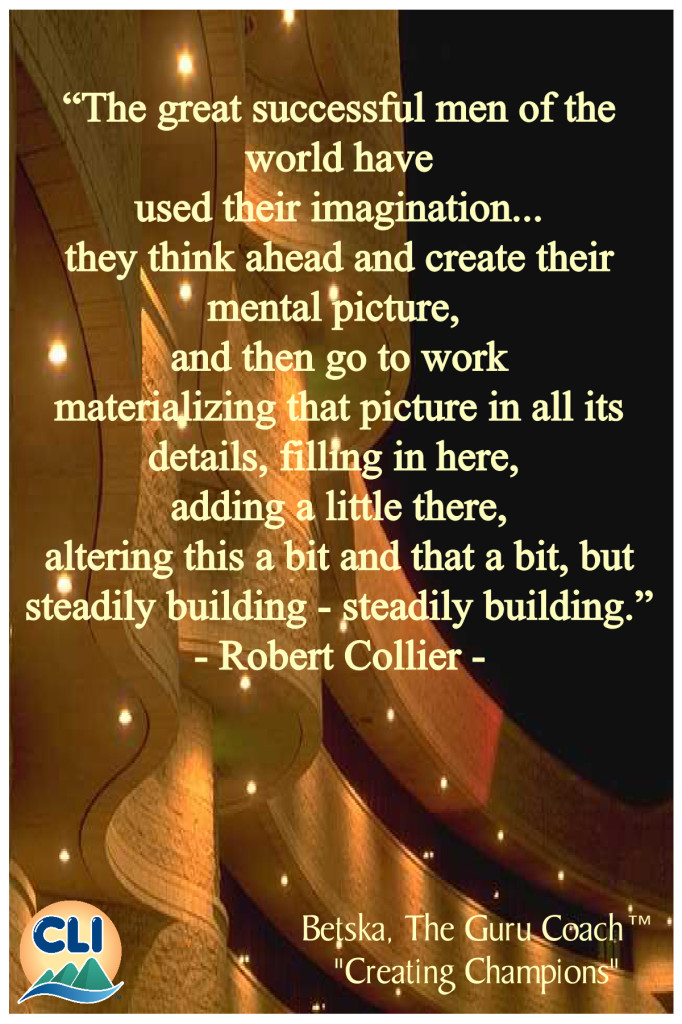
Just as Collier states, we must draw the plan and frequently make adjustments to account for demographic and lifestyle changes.
The key is to keep the plan simple. Otherwise we can get overwhelmed.
In my next blog article, we’ll be discussing what Sheryl Sandberg, COO of Facebook, has to say about leadership. This incredibly gifted leader is a role model for both men and women in leadership today.
Tune in next time where we will explore the 7 Quick Planning Steps for SHAPING YOUR FUTURE.
Betska, The Guru Coach™
Creating Champions
Sign up for CLI QuickTips™ and Blog Updates at:
Coaching and Leadership International Inc.
Part II. Creating Champions – Inspiring Excellence in the Workplace
Be a Leader – The Power of Example
(Tweet this)
This blog article is a continuation of my last blog on the many hats of a Leader.
 7) Trainer
7) Trainer
A Leader is a trainer. Give all of your people the opportunity to learn. Some will need encouragement; others will take anything they can get.
8) Facilitator
A leader is a facilitator. You make things happen and keep everyone on track. You make the goals appear simple by guiding your people to achieve their goals.
9) Problem Solver
A Leader is a problem solver. It is your role to ensure that your people feel comfortable enough to approach you about a problem. Build a feeling of trust between you and each employee. You will be rewarded with a loyal and content staff.
10) Planner
A Leader is a planner – a strategic one. You must plan to shape the future of the organization. John Naisbitt writes, “The most reliable way to anticipate the future is by understanding the present.”
11) Coach
A Leader is a Coach! A Coach listens exceptionally well and asks a lot of questions. You invite your people to come up with their own answers. Leaders who attend CLI’s PCMK™ Coach Training programs learn very early on The Law of Belief, “What we think, we become.” 95-99% of our behaviours are governed by our subconscious mind. Therefore, every person in an organization should be vigilant about checking out their subconscious beliefs and turfing out their negative ones.
12) Guardian of the Bottom Line
Someone once said that hard work is the yeast that raises the dough. No doubt about it: it takes hard work and good leadership to bring in the sheaves of wheat. And, it takes even more work to keep costs down. There is no magic to guarding the bottom line:
- Understand what Business Ratios and Reports you need to monitor.
- Follow the progress monthly.
- Make sure you’re meeting your revenue and cost goals.
- If not, find out why and fix it.
13) Innovator – this is a Bonus Hat!
A Leader is an innovator. There are six vision skills we must embrace if we are to successfully move into the 21st century. Picture a vehicle called the Vehicle for Progress where the front wheel skills are leadership, teamwork and aligned empowerment. The back wheel skills are risk, innovation and change management. While the front-wheel skills steer the organization, the back-wheel skills propel the organization forward. By taking risks and being innovating only then can we progress.
Wow! So many hats a Leader must wear. Which hat are you wearing today? Which ones could you wear tomorrow? Which ones do your people need you to wear in order to create a more successful future?
Betska, The Guru Coach™
Creating Champions
Sign up for CLI QuickTips™ and Blog Updates at:
Coaching and Leadership International Inc.
Application #1 to Creating Champions – Inspiring Excellence in the Workplace
Be a Leader – The Power of Example
This is the first application for Creating Champions, part of a series of blog articles with the overall theme of “When your staff succeeds, so do you.”
I’ve searched the learned halls of the internet and the depths of my brain for a good, short definition of leadership. I came to one conclusion. It’s impossible to define leadership in any short, concise way. It’s too complex. The closest I have come is:
Managers shuffle paper, Leaders inspire people.
The term “Leader” applies to anyone who manages people, directly or indirectly. A Leader knows that by creating champions of people, he/she will also succeed. They don’t have to be good at everything, but good leaders know that by setting an example, by exhibiting excellent people skills, chances are their organization will run more smoothly. Leaders inspire their employees to become champions at their jobs.
A Leader is 13 people in one. No wonder it’s a tough job! Let me briefly explain the first 6 of the 13 roles.
1) An Administrator
A Leader has to be good at shuffling paper, each page no more than twice. Not once. Not three times. Twice. Once to read and once to follow-up, if required. You spend as little time as possible shuffling paper because you are needed to help make decisions in meetings. The same applies to each email, handle each email a maximum of two times.
2) A Marketer
A Leader needs to know the business – He or she has to understand the market place, the competition, the customers and the product. Knowing how to make the customer buy is all-important. Be creative. Be service-oriented. Remember to differentiate.
3) A Manager
A Leader is a manager of people and time — a mover and a shaker! Invest in a good time-management system that should contain the following:
– Daily record of appointments and projects.
– Month at a glance.
– Year at a glance.
– A page for recurring tasks and events.
– A section to list what needs to be done.
– A follow-up process.
– A database where the coordinates of prospects are easily accessible.
– A section for expenses.
With advanced software, our role as a ‘Manager’ is much easier.
4) A Salesperson
A Leader needs to be a sales person. For example, the 10 applications to Creating Champions must be sold to the managers of your organization. After all, they are the ones who will sell it to their people and make it work.
5) A Motivator
A Leader is a motivator. Attitudes from above affect the entire organization. It gets a little tough when you hit the l000th employee but I’ve seen people do it! John Myser, former President of 3M Canada Inc., had an enormous capacity for remembering names. During his reign, 3M Canada had over 2,000 employees. Yet, you could hear him calling people by name as he walked the halls of the corporate head office. Treat your people well, care for them and they will reward you with success.
6) A Builder
A Leader is a builder. With the strength of a motivated staff, you will build the organization that you want. Expose your employees to a myriad of different ideas and philosophies by taking their minds outside of the workplace and they will repay you by being more creative on the inside.
For example, Mr. Myser implemented “lunch meets” to which employees would bring their lunch and listen to a topic for an hour. At some of those lunch meets, he would talk about performance and how no one should be afraid to fail.
“Failure is Success if we learn from it.” – Malcolm S. Forbes
(Tweet this)
He brought in a brain surgeon one day to speak about his job. That was incredibly fascinating! On another occasion he invited us to have lunch while listening to a classical orchestra.
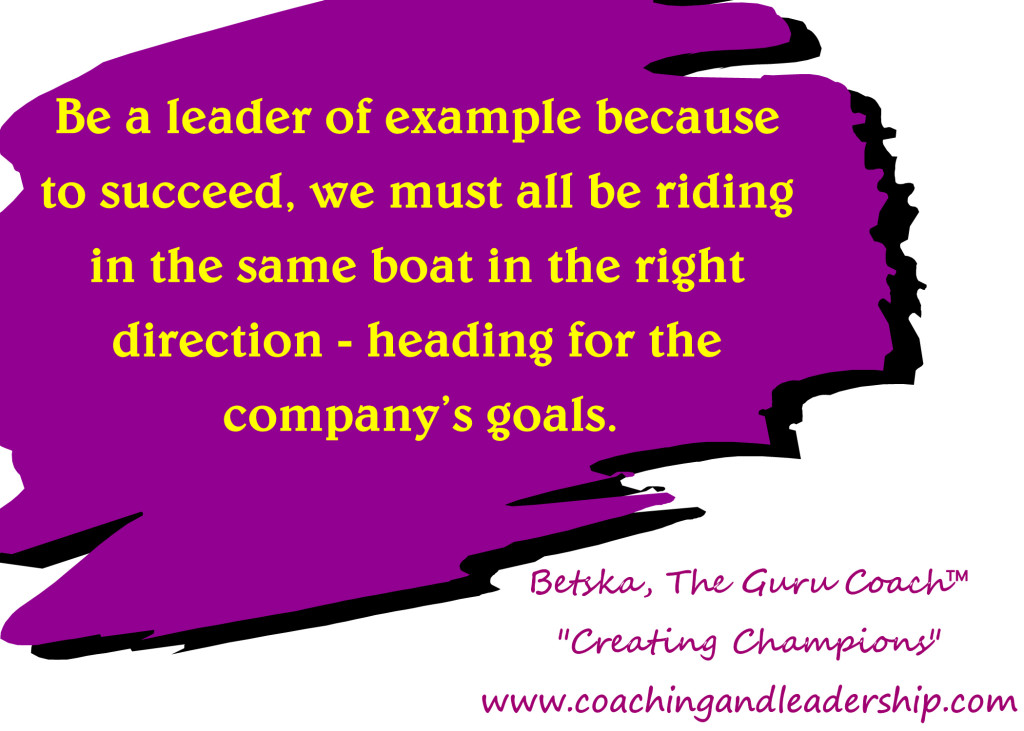
Next article, we’ll explore the remaining 6 roles of a Leader and an important chart on The Many Facets of a Leader including interpersonal skills and major assets.
Betska, The Guru Coach™
Creating Champions
Sign up for CLI QuickTips™ and Blog Updates at:
Coaching and Leadership International Inc.
Creating Champions – Passport to the 21st century
Over the next several blog articles we’ll be featuring the details of these ten absolutely critical applications a Leader must do to support the growth of their direct reports and all those in the organization.
All the best product and services in the world are not going to get you anywhere without a motivated team of champions driving your goals to growth and profitability. Creating these champions requires focused attention. It requires extraordinary people skills. It may mean changing your corporate culture, your organization structure and the way you do business with your customer.
Incentive programs can assist an organization in temporarily boosting morale. Use incentive programs to reward solid solutions, instead of quick fixes. To have an enduring effect, treat your employees well on a daily basis by running your organization with feeling, with heart.
![]() “Expect the best from your people. Communicate your expectations. Consciously work at identifying and acknowledging good behaviour. Lead your people to be successful and they, in turn, will make you successful. Recognize their achievements and praise them for their efforts.”
“Expect the best from your people. Communicate your expectations. Consciously work at identifying and acknowledging good behaviour. Lead your people to be successful and they, in turn, will make you successful. Recognize their achievements and praise them for their efforts.”
‘Creating Champions’, is a book that is inspiring excellence in the workplace. The concepts in Creating Champions, when implemented, help organizations overcome communication roadblocks. By encouraging employees and management to communicate openly, challenges can be overcome and opportunities seized.
We welcome you to stand by and read the next several blog articles featuring each of the Ten Applications to Creating Champions.
When your staff succeeds, so do you.
(Tweet this)
Betska, The Guru Coach™
Creating Champions
Sign up for CLI QuickTips™ and Blog Updates at:
Coaching and Leadership International Inc.
I Believe in the Power I AM
I was coaching a little boy today … he is 47 years old.
‘Peter’ is a brilliant man having achieved a very senior level in his organization and pretty much destined for the very top job. So why did I refer to him as a ‘little boy’?
While Peter has an IQ score which is off the charts, when we started coaching his EQ was on the extreme side of low … probably from old school parents telling him that the expression of emotions and having compassion, for example, is ‘girly’ or is ‘fluffy stuff’. In his awakening during the coaching process, Peter realized that he needs to be a balanced leader with both transactional skills (high IQ) for the purposes of both analysis and focused action, and transformational skills (high EQ) for the purposes of inspiring his people to reach their full potential and truly excel at their jobs.
As his Executive Coach, the only way to permanently raise his EQ score was to take him into his subconscious mind to find out what negative beliefs he had about himself. We also found the root cause events that cemented these negative beliefs into his subconscious. For example, his Mother wanted to say Grace before each dinner meal but his Dad scoffed at it … saying that he was an atheist or agnostic and didn’t believe in a Higher Power. [Dad is thinking to himself, “I am bad. Why would anyone want to bless me?”] His Dad’s behaviour shut down Peter’s spiritual side.
So guess what? Peter took on the patterns of his Dad in terms of not believing in a Higher Power  which made him turn to his logical left brain for solutions (IQ) versus his right brain which is our connection to our genius or Higher Power. With the support of our Power Coaching® with Mind-Kinetics® sessions Peter is a changed man. He is no longer a little boy.
which made him turn to his logical left brain for solutions (IQ) versus his right brain which is our connection to our genius or Higher Power. With the support of our Power Coaching® with Mind-Kinetics® sessions Peter is a changed man. He is no longer a little boy.
Instead of playing in the mud of his left brain he now plays creatively and with great passion in the bottomless quarry of the sand box of his right brain and believes in himself and in his people. It is extraordinary to watch.
Here are some of the belief systems that Peter anchored in his subconscious mind to dig himself out of the mud:
If any of these feel as if you could benefit from them, replace Peter’s name with yours. Then, you may wish to anchor them all at once in your subconscious mind by doing www.TheBrainWalk.com. Select “A Journey for Peace of Mind”.
Read your new beliefs every day for a few days. Watch as miracles start to happen around you. No wonder Bruce Lipton says the subconscious is one million times more powerful than the conscious mind.
Betska, The Guru Coach™
Sign up for CLI QuickTips™ and Blog Updates on:
Coaching and Leadership International Inc.













